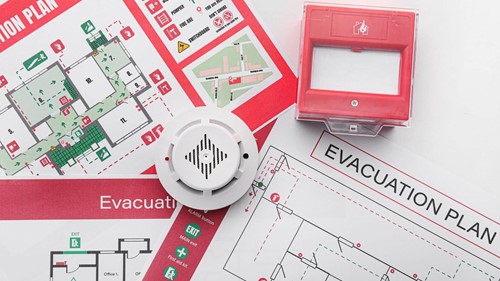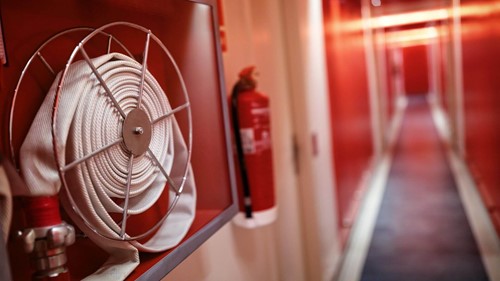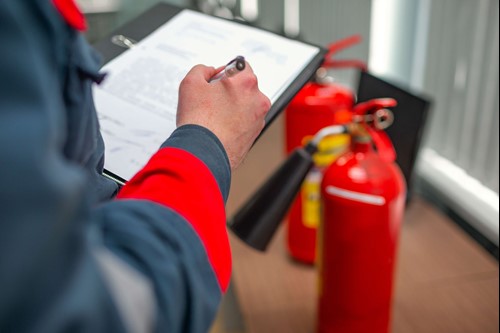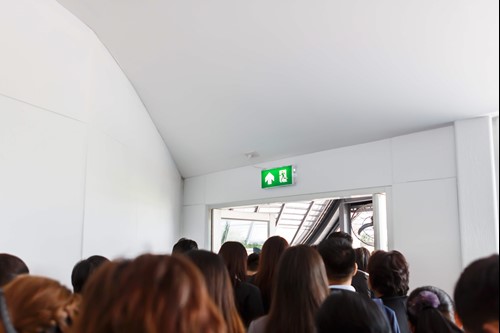The Building Safety Act 2022 brings several measures intended to make buildings and residents safer.
From the 1st October 2023, the Building Safety Act comes into force, bringing with it many amendments.
These new amendments will make significant changes to individuals who are the responsible persons for fire safety in all types of buildings - this doesn't just include residential buildings when it comes to risk assessments, management, coordination and cooperation.
If you need immediate support, or advice when handling fire safety, get in touch with one of Croner's health and safety experts on 0800 141 3593.

What are the changes?
The Building Safety Act 2022 defines “higher-risk building” as a building in England that is at least 18 metres in height or has at least 7 storeys and, contains at least 2 residential units. These buildings must also be registered with the regulator. Following the Fire Safety Order and Building Safety Act, the responsible person (landlords, or the managing agents) will be required to do the following:
Record ALL their fire safety arrangements
This includes demonstrating how fire safety is managed within both the building and premises.
Record and complete a fire safety risk assessment in full
This requirement will replace the old requirement where the responsible person only needed to record significant findings of safety defects in the fire risk assessment.
It's important to remember that this means your fire risk assessment must include ALL the control measures that you have in place and any additional measures that are required as a result of the risk assessment.
Record the identity of applicable individuals
The responsible person must also record the identity of the individual (their name), and or if applicable, the organisation engaged by them to undertake/ review any or all of the fire risk assessment.
Keep contact information
They need to record and update contact information, this should include a UK-based address.
This information needs to be shared with other responsible people and those residing in multi-occupied residential premises, where necessary.
This could be, for example, in a multi-occupancy building responsible people and any tenants and managing agents.
It is the duty of the responsible person to ensure that the fire risk assessment is suitable and sufficient.

What makes an assessment suitable and sufficient?
As we've mentioned the responsible or competent person is responsible for ensuring that all fire risk assessments are suitable and sufficient.
This means that the assessment should follow:
Ensure a proper assessment is carried out
A full and proper check should be carried out across the whole property for the assessment to be sufficient; it should focus on the whole premises, not just the common areas.
This should include residential and commercial tenants, external walls, structures and front entrance doors (tenants) when the building is being assessed as a residential property.

Full and detailed justification
The responsible persons should provide a full and detailed justification, this will include the commentary and assessment of the acceptance (or not) of the fire safety measures in place, and any that are any additional requirements.
The competent person should also include all the available evidence, including what is provided, what is missing, and what the additional needs are and why.
This should also outline all risks posed by the tenants (residential and commercial).
Provide a full technical consideration
Your fire risk assessment should take into consideration all areas of the fire and building safety systems within the premises.
State who is affected
For the assessment to be suitable and sufficient, you should state who is affected by the building safety defects and risks, this refers to everyone in the building, residential or commercial.
Consider all risks
Finally, to ensure the assessments are suitable and sufficient, all safety risks on the property must be taken into consideration. Including taking into consideration existing regulations and the number of people who are or may be affected by them.

Are there any insufficient documents?
Using the PAS79 style risk assessment might seem like the cheaper and faster way to complete the assessment. They may not be suitable and are insufficient when reporting all the details on fire risks correctly with detail.
Particularly when the building is considered to be or falls into the scope of higher-risk buildings by the BSA.
The PAS 797-2: 2020 fire risk assessment, housing code of practice remains withdrawn by the BSi.
If you have a building in the scope of the BSA, for example, residential buildings that are over 7 stories high (18 metres) then you MUST have sufficient risk-based evidence when creating the building safety case report.
In some instances, a fire risk assessment with insufficient information or detail will be required to support claims of safety, this may increase or attract additional costs.
The building safety regulator has stated that the responsible person should also take into consideration the fire hazards within individual flats and common areas, and include any structural fire-related risks.

Changes to the responsible person
As the changes to the Building Safety Act 2022 come into place, under the Fire Safety Order the responsible person needs to do the following.
- Take reasonable steps to make sure the other responsible people who share or have other duties on the same premises. They must also ensure that the accountable persons (a new legal entity under the Building Safety Act 2022 for higher-risk buildings (residential)) on the premises are known to all responsible people.
- Share all fire safety information with responsible people who are coming into the role.
- Give any residents the appropriate fire safety information. They should ensure that said information is easy to understand by residents, this should also include the fire safety (England) regulations 2022.
As part of a legislative requirement, the responsible person needs to be competent to carry out or review fire risk assessments.
This requirement is being brought in at a later date, more guidance on this is to follow.
Until then, when building owners are appointing a fire assessor, the recommended advice is that they make sure they are competent enough to do so.
Here you could consider if they've received sufficient training, experience, and knowledge or have any other qualities relevant to the role.
Building owners should, however, ensure they have a third-party certification, for example, a BAFE SP205 certificate.
Lastly, as part of the Building Safety Act 2022, the government has raised the fines for offences, these are from level 3 (£1000) to level 5 (unlimited).
The new fire safety order will apply to all non-domestic premises, such as workplaces and non-domestic parts of multi-occupied residential buildings. This could be corridors, stairways, and plant rooms.
This also covers the building's structure, fire doors and external walls, including the walls between tenant areas and common areas.
Talk to an expert
For advice on H&S in your workplace, including health & safety training, and health & safety consultancy, speak to one of our experts.
Croner has a team of award-winning HR consultants who are specialists in their field. We've been helping businesses for over 80 years and our advice line is open 365 days a year, 24 hours a day. Why not speak to a Croner expert on 0800 141 3593.
Related resources
Categories
- Business Advice
- Culture & Performance
- Disciplinary & Grievances
- Dismissals & Conduct
- Employee Conduct
- Employment Contracts and Documentation
- Employment Law
- Employment Rights Bill
- End of Contract
- Equality & Discrimination
- Health & Safety
- Hiring and Managing
- Leave & Absence
- Managing Health & Safety
- Moving
- Occupational Health
- Pay & Benefits
- Recruitment
- Risk & Welfare




